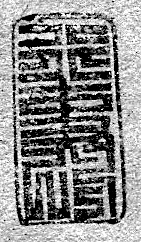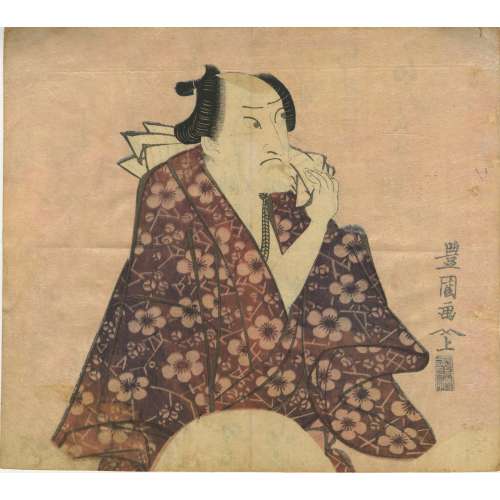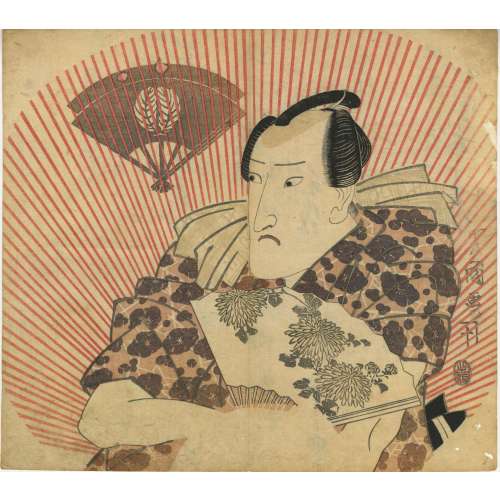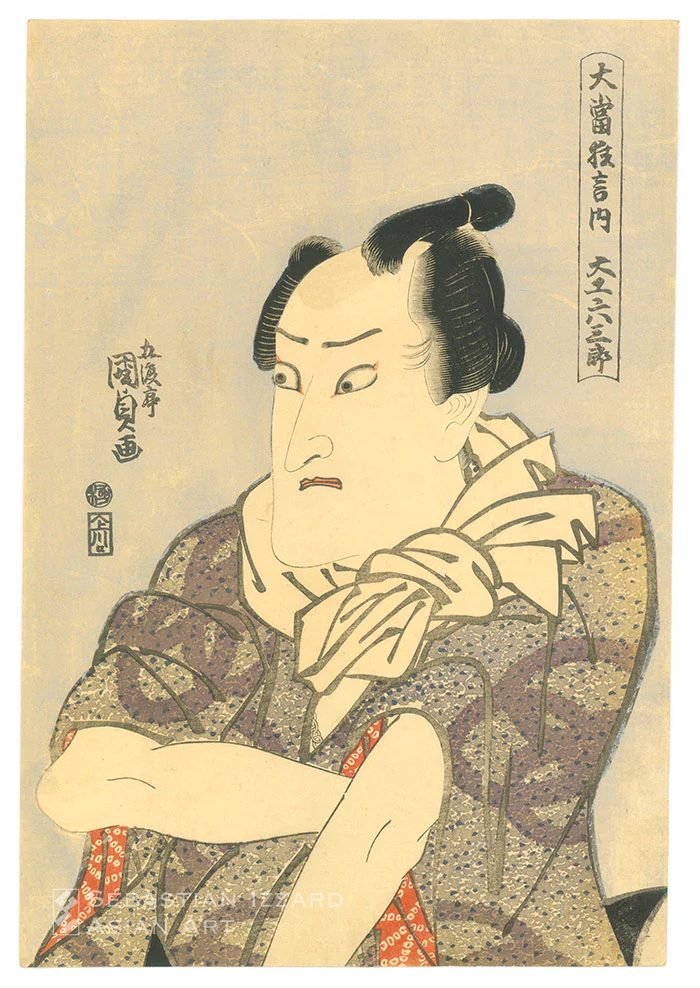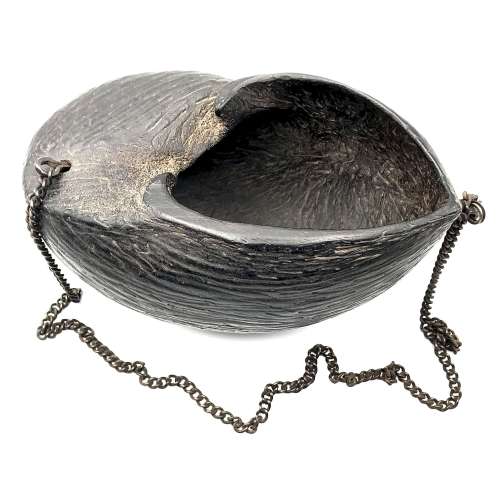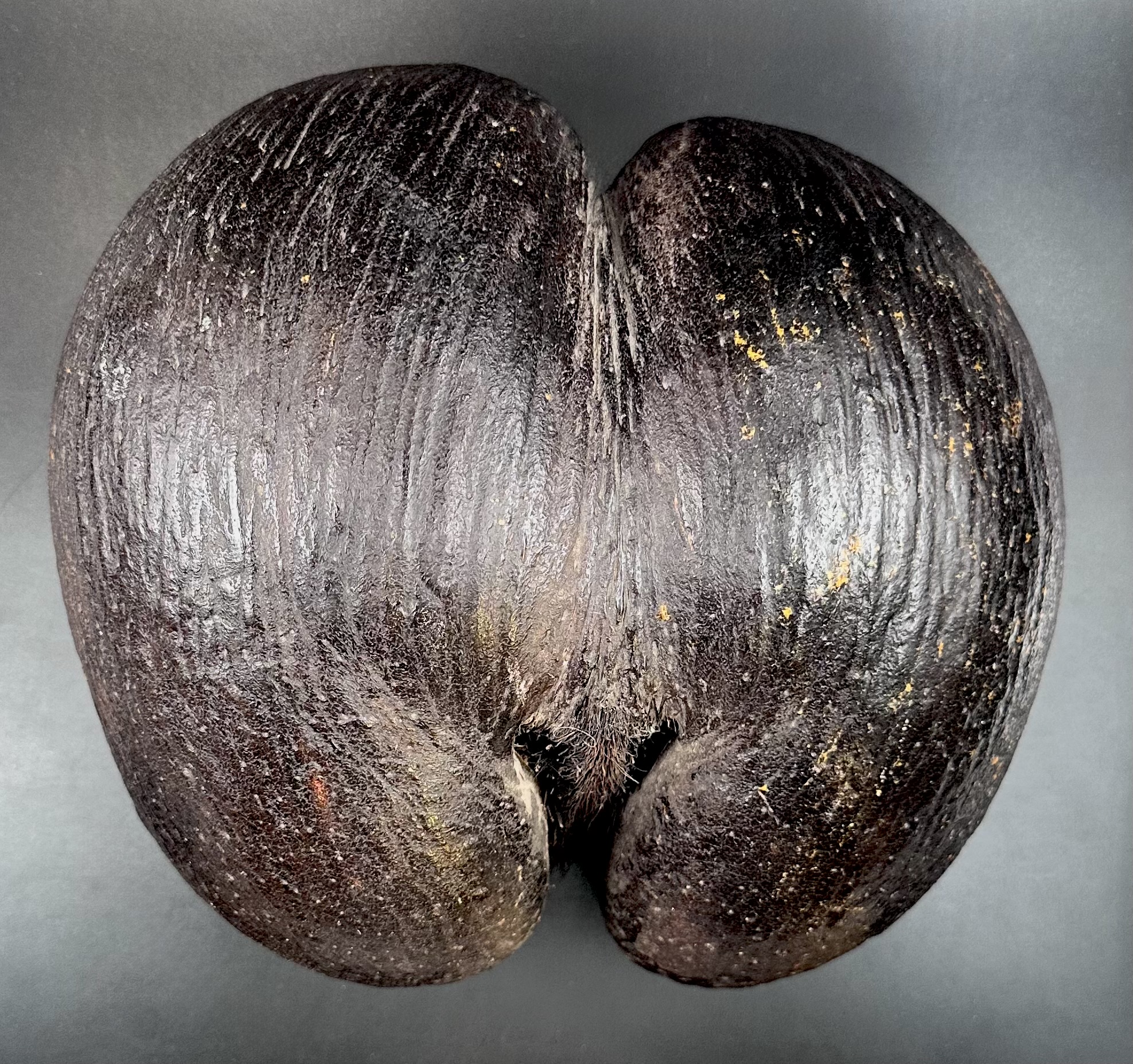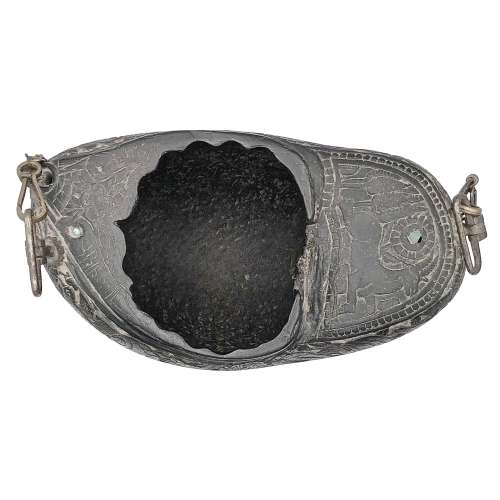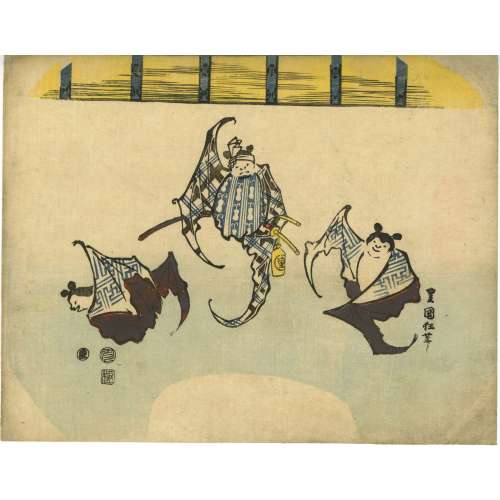Actor: Onoe Baikō III [三代目尾上梅幸] (Japanese, 1784–1849); Other names: Onoe Kikugorō III (尾上菊五郎), Ōkawa Hashizō I (大川橋蔵初代), Onoe Matsusuke II (二代目尾上松助), Onoe Eizaburō I (初代尾上栄三郎)
Role: Konjin Chōgorō (金神長五郎) Play: Ku Kyōdai Shōbu Katabira (句兄弟菖蒲帷子) Theater: Nakamura-za (中村座), Edo, 1815 Half-length, three-quarter-view, facing to the left portrait of Onoe Baikō III as Konjin Chōgorō, in the play Ku Kyōdai Shōbu Katabira, staged at Nakamura-za in 1815. The actor wears a purple kimono with a plum blossom motif (梅, ume).A print from the Waseda University Tsubouchi Memorial Theatre Museum also depicts Onoe Baikō III as Konjin Chōgorō, showing him holding a box inscribed with 神金 (Kane no Kami). The name Konjin consists of the same kanji in reverse order – reading right to left (金神).
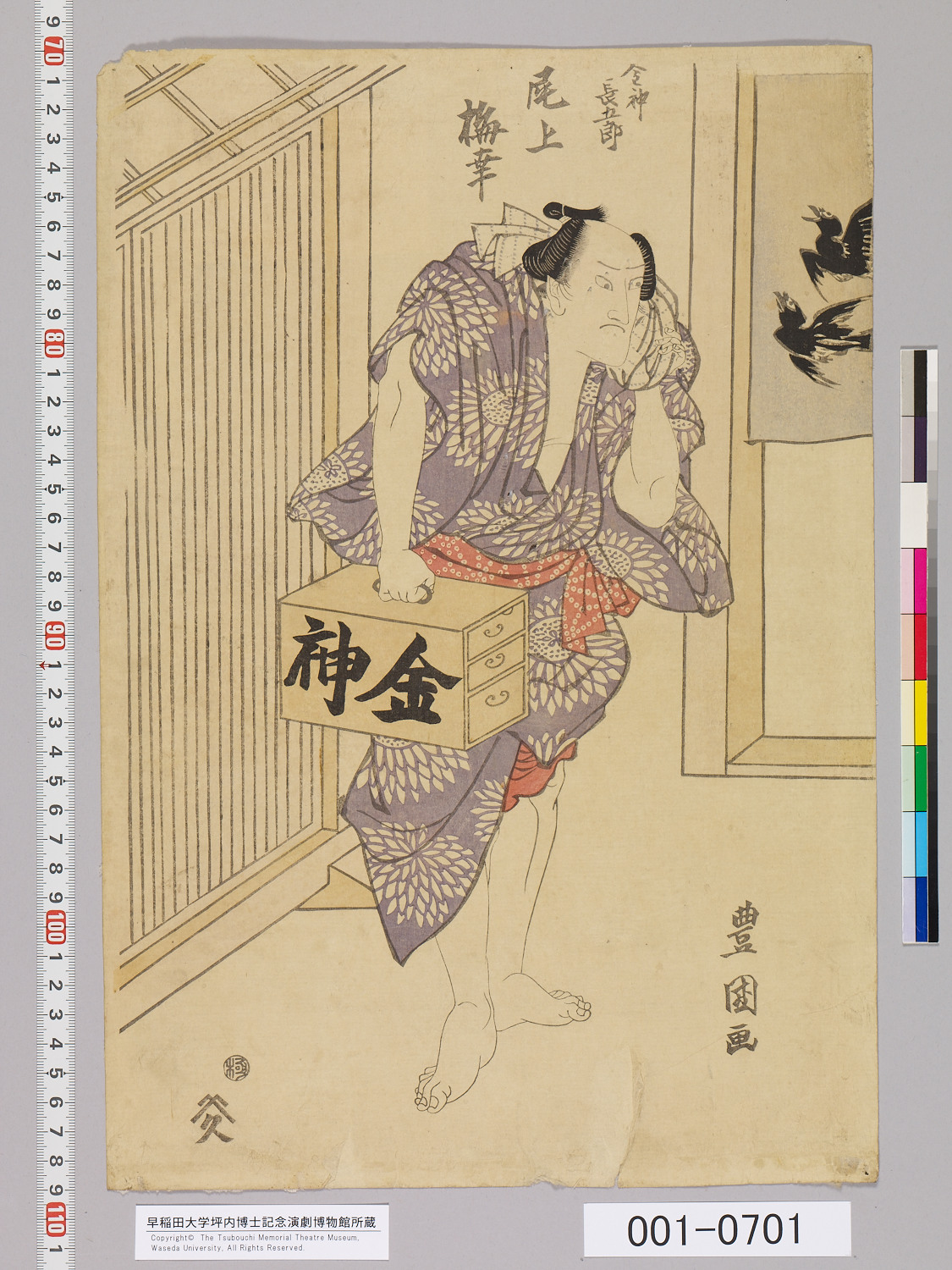
Konjin Chōgorō is a legendary figure in Japanese folklore, renowned as a formidable sumo wrestler. His tales often depict him engaging in supernatural feats, such as vanquishing demons and showcasing extraordinary strength.
In the realm of kabuki theatre, Konjin Chōgorō's character has been portrayed in various plays, though specific details about Ku Kyōdai Shōbu Katabira (句兄弟菖蒲帷子) remain unknown.
Notes
-
A certain confusion regarding the attribution of this print arises from the statement by Andreas Marks (Publishers, 2011, p. 488), which asserts that the gyōji aratame seal was used exclusively for fan prints between 1810 and 1814. However, it is known that Onoe Baikō III performed the role of Konjin Chōgorō at Nakamura-za in the 5th month of 1815. Marks also notes that the earliest known fan print bearing this seal dates to 1810; based on this new evidence, we may now consider the latest known instance to be the 5th month of 1815.
